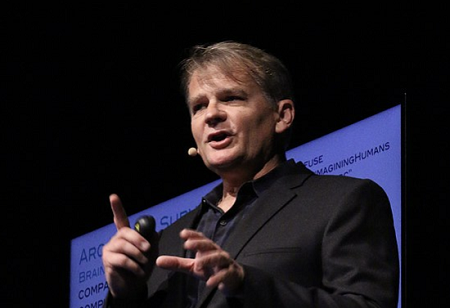David Ewing Duncan, Researcher and CEO of Arc Fusion | Saturday, 23 November 2024

Researcher and CEO of Arc Fusion, David Ewing Duncan, while speaking at Bengaluru Tech Summit 2024, talked about the idea of super convergence where technologies like AI, genomics, and synthetic biology are coming together to change health and human enhancement. Following are the key insights.
We are at an extraordinary crossroads - a point where artificial intelligence (AI), genomics, synthetic biology, robotics, and precision medicine all come together in new, unexpected ways to radically improve human health and aging and enhance human beings. However, amidst this excitement, the pressing question remains: Is this real? Or are we actually witnessing the convergence of these powerful technologies right now, or are we still in the early stages of a grand vision?
The concept of exponential growth in technology is not new. The Law of Accelerating Change suggests that technology has a history of accelerating, as it has since tens of thousands of years ago. This puts the future in context, but of course, progress does not happen in a straight line. At times, there is fast growth, and at other times, there are disruptive setbacks. This pattern is crucial to understand when assessing the current super convergence – when technologies from dissimilar domains are starting to collide and coalesce.
Traditionally, AI, robotics, synthetic biology, or genomics have moved forward in isolation. These were mostly siloed fields, with little interaction between them. They all had their breakthroughs, but they didn’t seem to mutually enrich each other in important ways. That dynamic is shifting today. The technologies are now converging in unimaginable ways.
Until recently, genomics was the domain of the few academic researchers studying rare diseases, but it is now maturing into a tool for understanding common health conditions. Similarly, AI is being more deeply embedded into healthcare applications, from drug discovery to personalized medicine. While promising, these advancements still have big hurdles to overcome regarding integration. The reality is that while we are making progress, there are still so many ways in which these technologies are in their infancy and still not capable of being widely used.
For the first time, the fundamental philosophical divide between biologists and engineers has been a major hurdle in the convergence of biology and engineering. Biologists for years could not understand the fine mechanics of the human body and other organisms, and engineers were often focused on efficiency and design, but rarely on the intricacies of biological systems. Such a divide limited potential for real convergence. But recently, there have been breakthroughs in bioengineering that are starting to bridge that gap — bioengineering still keeps the precision of engineering but adds the complexity of biology. This is a crucial shift for synthetic biology, where biologists can modify living organisms to achieve practical ends, and also for AI, which can now help with these manipulations using deep learning algorithms.
Another important concept to keep in mind as we ponder about super convergence is the wave theory. According to wave theory, all technological developments follow a wave. It is full of troughs of disillusionment and stagnation and periods of intense excitement and rapid growth. Seeing where we are in these waves—on top of a technology breakthrough or in a lull before the next wave—can inform decisions about whether to invest in or pursue the technologies.
This theory fits in with the notion of adjacent transformations, where technologies closer to each other can leverage each other to achieve exponential progress. AI, robotics, and synthetic biology are getting closer and closer, and as they advance at the same time, they can create breakthroughs in healthcare and human enhancement.
The convergence of technologies is exciting, but super integration is just as important if we are to fully realize the potential of the innovations it brings. Coming together of different technologies is convergence, but integrating these technologies so that they work seamlessly together is integration. AI has to get better at drug discovery and synthetic biology must create new organisms, but the breakthroughs must be meaningfully incorporated into existing systems and industries. For super integration, we need engineers, scientists, policymakers, and investors working together to make sure technologies are not isolated but work together in harmony.
Super integration, however, is likely to be more challenging than convergence in many ways; convergence may occur naturally, but integration requires deliberate action and careful coordination. For instance, although AI has already transformed industries such as finance and marketing, its application in healthcare is patchy at best. The next frontier is to ensure that AI, genomics, and robotics work in concert together in a medical setting.
Although super convergence is exciting, we need to be careful. These are early days in integrating these technologies, but the future looks promising, and we must remain vigilant about the hurdles ahead. Ambitious predictions are, of course, part of the hype surrounding these fields, but we should remember that progress in science and technology tends to be neither as swift nor as smooth as we like to think.
Are we really in a super convergence era, then? It is easy to declare that we are on the cusp of a revolution, but these are the hurdles we face. Although technology is moving at an unprecedented rate, the full integration of these different fields is a work in progress. The promise of super convergence is huge, but only if it is carefully leveraged, prudently coordinated, and cautiously integrated. For now, the wise course is to be excited and skeptical, optimism tempered with healthy skepticism.